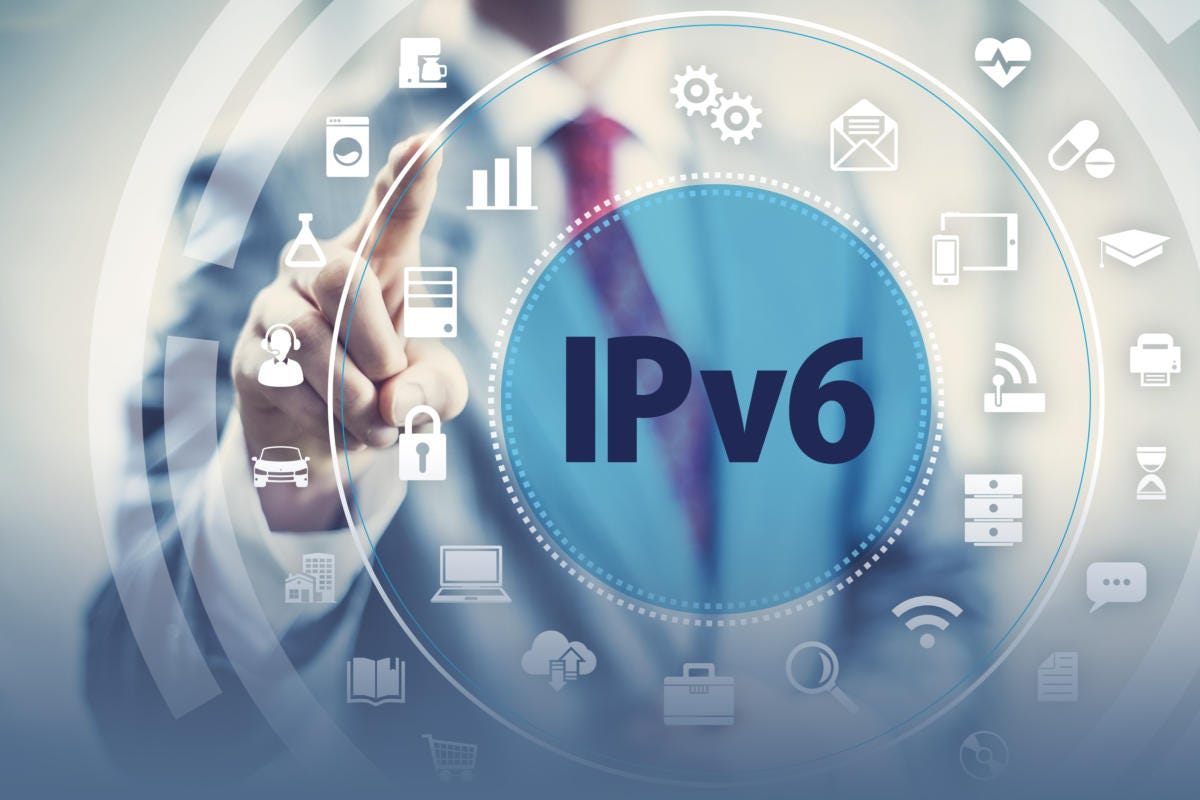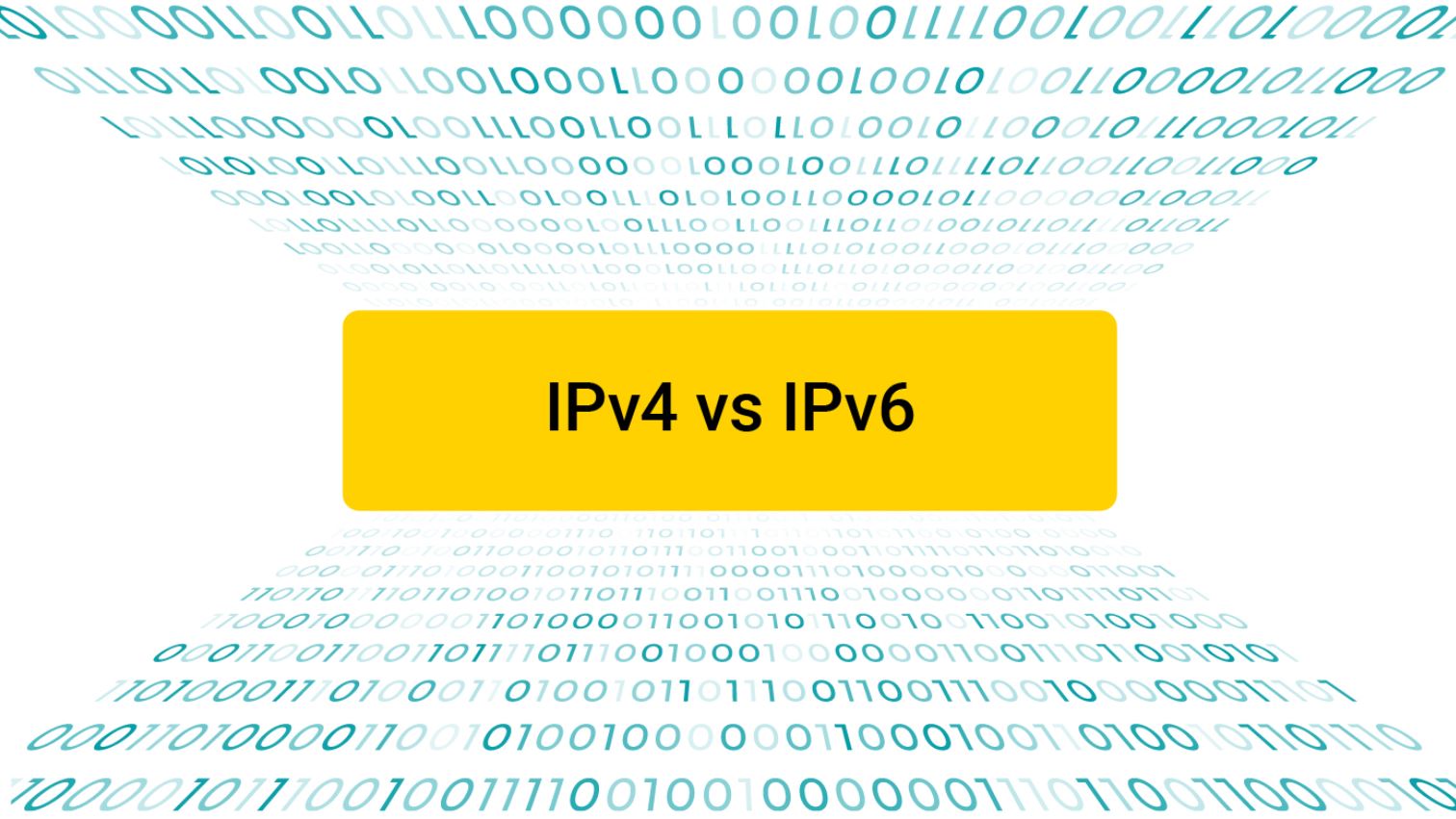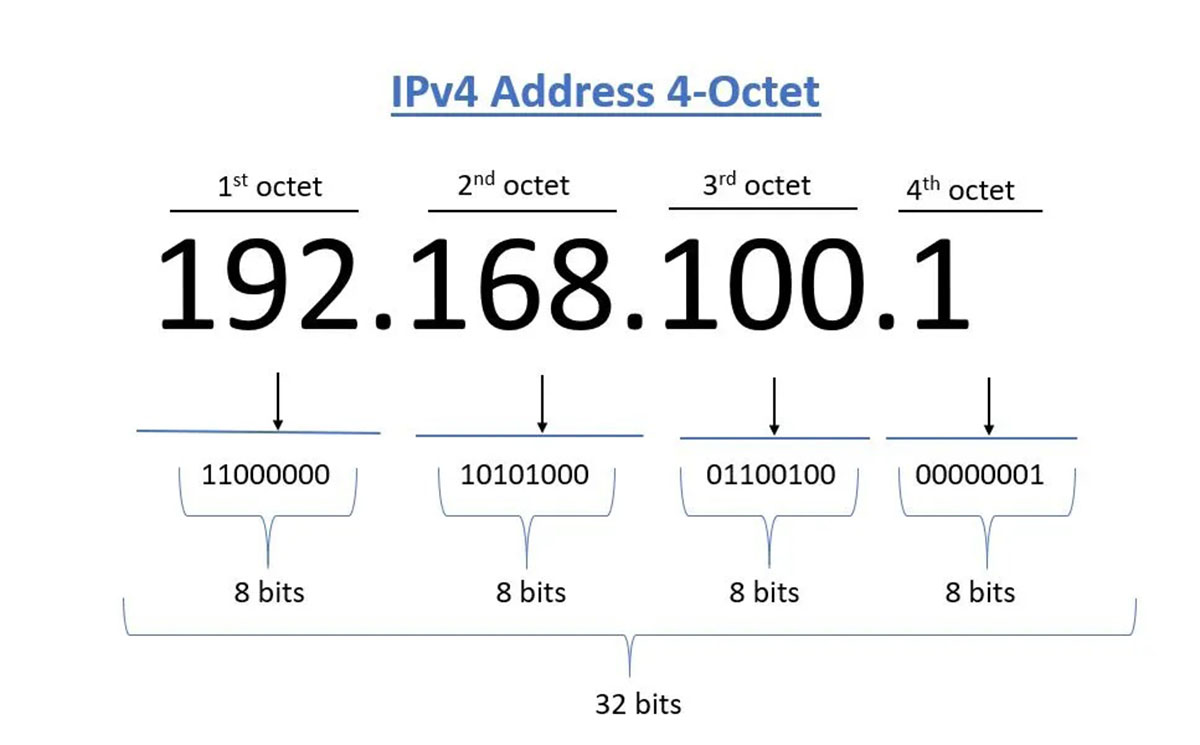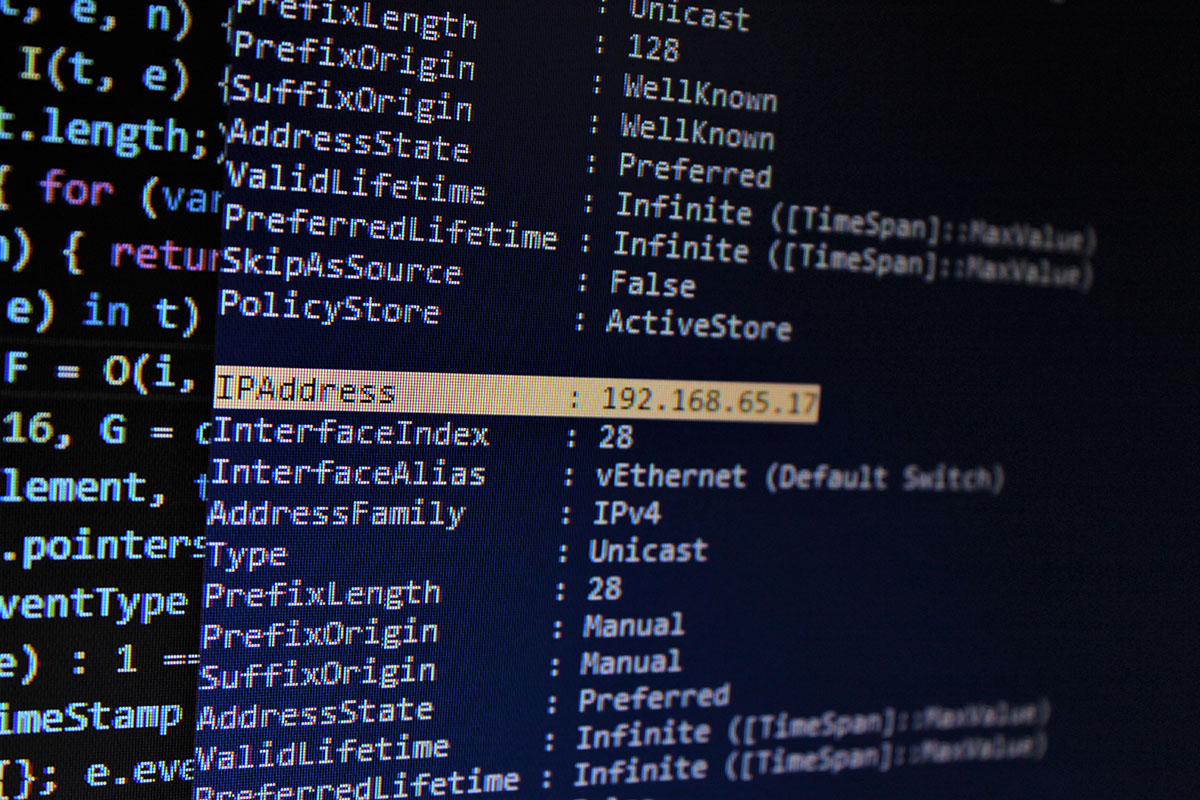Introduction:
Welcome to the ever-evolving world of technology, where connectivity and data are rapidly becoming an integral part of our daily lives. One of the most significant advancements in recent years is the Internet of Things (IoT), a concept that connects various devices and objects to the internet, enabling them to communicate and share data.
As IoT continues to gain traction, the need for efficient and secure communication protocols becomes paramount. This is where Internet Protocol (IP) comes into play. IP is the protocol responsible for addressing and routing data packets across networks.
There are currently two versions of IP in use – IPv4 (Internet Protocol version 4) and IPv6 (Internet Protocol version 6). While IPv4 has been in use for several decades, the rapid proliferation of IoT devices has highlighted its limitations.
In this article, we will explore why IPv6 is the preferred choice over IPv4 for IoT implementations. We will delve into the benefits and advantages that IPv6 brings to the table, including increased address space, enhanced security, improved performance, and better mobility and auto-configuration capabilities.
What is IoT?
The Internet of Things (IoT) refers to the network of interconnected physical devices or “things” that communicate and exchange data with each other over the internet. These devices can range from everyday objects such as smart home appliances, wearable devices, and industrial machinery to more advanced technologies like autonomous vehicles and smart city infrastructure.
The core concept behind IoT is the ability of these devices to collect and share data, as well as interact with the environment or other connected devices. This data can then be analyzed and used to make informed decisions, automate processes, and provide valuable insights.
IoT leverages a combination of technologies, including sensors, actuators, connectivity protocols, and cloud platforms, to seamlessly integrate physical and digital worlds. By harnessing the power of IoT, businesses and individuals can unlock tremendous opportunities for efficiency, convenience, and innovation.
For example, in a smart home setting, IoT devices can enable homeowners to remotely control various aspects of their living space, such as adjusting the thermostat, turning lights on or off, or monitoring security cameras. In the industrial sector, IoT can optimize production processes by monitoring equipment health, predicting maintenance needs, and facilitating real-time data analytics.
Overall, IoT holds immense potential to transform industries, enhance sustainability, improve quality of life, and drive economic growth. As more devices become connected, the need for reliable and scalable communication protocols like IPv6 becomes crucial to support the growing IoT ecosystem.
How does IoT work?
At its core, IoT relies on the seamless integration of four main components: devices, connectivity, data processing, and user interfaces. Let’s explore how these components work together to enable the functioning of IoT.
1. Devices: IoT devices, also known as “smart” devices, are equipped with sensors, actuators, and connectivity capabilities. These devices collect and transmit data to the cloud or other connected devices. Examples of IoT devices include wearables, sensors in industrial machinery, smart home appliances, and connected vehicles.
2. Connectivity: IoT devices use various communication protocols to connect and exchange data with each other and the internet. This can include Wi-Fi, Bluetooth, cellular networks, or specialized IoT protocols such as Zigbee or LoRaWAN. The choice of connectivity depends on factors such as range, data bandwidth, power consumption, and security requirements.
3. Data processing: Once the data is collected from the devices, it needs to be processed and analyzed to extract valuable insights. This is often done in the cloud or at the edge, where algorithms and machine learning techniques can be applied to derive meaningful information from the raw data. Data processing also involves storage, security measures, and integration with other business systems.
4. User interfaces: IoT applications often have user interfaces that allow users to interact with the connected devices and access the processed data. This can be through mobile apps, web portals, or voice-activated assistants. User interfaces enable users to control and monitor IoT devices, set preferences, receive alerts, and access data analytics.
By combining these components, IoT enables a wide range of applications and use cases. For instance, in a smart home scenario, a user can use a mobile app to remotely control lights, check security camera feeds, and receive alerts when a door is opened. In an industrial setting, IoT can enable predictive maintenance by analyzing machine data to identify potential failures before they happen.
Overall, the functioning of IoT relies on a network of interconnected devices, seamless connectivity, advanced data processing capabilities, and user-friendly interfaces. These elements work together to create a dynamic and intelligent ecosystem that enhances our lives and drives innovation.
What is IPv4?
Internet Protocol version 4 (IPv4) is the fourth revision of the Internet Protocol, which is the foundational protocol that enables communication across the internet. IPv4 was the first widely used version of IP and is still in use today.
IPv4 addresses are 32-bit numerical values expressed in four sets of numbers separated by periods. Each set can range from 0 to 255, representing a total of approximately 4.3 billion unique addresses. However, due to the exponential growth of internet-connected devices, the availability of unique IPv4 addresses has reached its limit.
One of the main limitations of IPv4 is its finite address space. With the rapid expansion of IoT devices, which are projected to number in the billions, the scarcity of available IPv4 addresses has become a significant concern. This limitation poses challenges for the future growth and scalability of IoT technologies.
IPv4 also presents security vulnerabilities as it lacks built-in security features. Additional security measures such as firewalls, VPNs, and encryption protocols need to be implemented to protect data transmitted over IPv4 networks. This can add complexity and overhead to IoT implementations.
Despite these limitations, IPv4 continues to play a crucial role in connecting devices and enabling communication over the internet. Many existing devices and networks still use IPv4, and transitioning entirely to a new protocol like IPv6 is a gradual process that requires careful planning and coordination.
While IPv4 served as a reliable and foundational protocol for many years, the expansion of IoT and the need for more addresses and enhanced security have paved the way for the adoption of IPv6.
What is IPv6?
Internet Protocol version 6 (IPv6) is the successor to IPv4 and was developed to address the limitations posed by the finite address space of IPv4. IPv6 utilizes a 128-bit address format, allowing for approximately 340 undecillion (3.4 x 10^38) unique IP addresses. This vast address space ensures that the growing number of IoT devices and internet-connected devices can be assigned unique addresses without running out of available addresses.
While the primary motivation for the development of IPv6 was to increase address space, it also brings several other improvements and features compared to IPv4. One of the significant enhancements is the inclusion of built-in security features. IPv6 incorporates IPsec (Internet Protocol Security) as a standard, providing encryption, authentication, and integrity for data transmitted over IPv6 networks. This native security support helps protect IoT devices and data, reducing the need for additional security measures.
Another notable feature of IPv6 is its support for better traffic flow management and quality of service (QoS). IPv6 uses a simplified and more efficient header structure, resulting in improved routing and faster packet processing. This leads to enhanced performance and reduced latency, critical factors for real-time applications and IoT systems that require low latency and high reliability.
In addition to increased address space, improved security, and better performance, IPv6 also introduces features such as stateless address auto-configuration (SLAAC) and mobility support. SLAAC simplifies the process of assigning and configuring IP addresses to devices, making it easier to connect and initialize IoT devices on the network. Mobility support enables devices to maintain their connectivity even when moving between different networks or locations.
Overall, IPv6 is designed to address the shortcomings of IPv4, making it the preferred choice for IoT implementations. With its vast address space, built-in security, improved performance, and enhanced mobility support, IPv6 provides a solid foundation for the future growth of IoT and the ever-expanding network of connected devices.
Why is IPv6 preferred over IPv4 for IoT?
IPv6 offers several advantages over IPv4 that make it the preferred choice for IoT implementations. Let’s explore the key reasons why IPv6 is preferred for powering the IoT ecosystem:
1. Increased address space: The primary motivation behind the development of IPv6 was to overcome the exhaustion of IPv4 addresses. With its 128-bit address format, IPv6 provides an enormous address space that can accommodate the exponential growth of IoT devices. This ensures that each device can have a unique, globally routable IP address, eliminating the need for complex network address translation (NAT) techniques.
2. Improved security: IPv6 incorporates IPsec as a standard, providing a built-in security layer that offers encryption, authentication, and integrity for data transmitted over IPv6 networks. This native security support greatly enhances the security of IoT devices and their communication, reducing the risk of data breaches and unauthorized access. Additionally, IPv6 includes features like secure neighbor discovery and mandatory support for secure routing protocols, further strengthening the overall security of IoT networks.
3. Better performance: IPv6 introduces a simplified and more efficient header structure, resulting in improved routing and packet processing. This leads to faster transmission speeds, reduced latency, and more efficient use of network resources. These performance improvements are crucial for real-time applications and latency-sensitive IoT systems, enabling higher reliability and better user experiences.
4. Enhanced mobility and auto-configuration: IPv6 includes features such as stateless address auto-configuration (SLAAC) and mobility support. SLAAC allows IoT devices to automatically obtain their IPv6 addresses without the need for manual configuration, simplifying the setup and deployment of devices. Additionally, IPv6 enables devices to maintain their connectivity even when moving between different networks or locations, ensuring seamless communication and uninterrupted services.
5. Future-proofing: As the IoT continues to grow and evolve, the limitations of IPv4 become more apparent. IPv6 provides a future-proof solution that can accommodate the increasing number of devices and the data they generate. By adopting IPv6 for IoT implementations, organizations can ensure long-term scalability and avoid the challenges associated with IPv4 address exhaustion.
In summary, IPv6’s increased address space, improved security, better performance, enhanced mobility support, and future-proofing capabilities make it the preferred choice for IoT deployments. As the IoT ecosystem expands, leveraging the advantages of IPv6 is crucial to enable seamless connectivity, secure communication, and efficient data exchange among the billions of connected devices.
Increased address space
One of the primary reasons IPv6 is preferred over IPv4 for IoT implementations is the significantly increased address space it offers. IPv4 addresses are 32-bit, providing approximately 4.3 billion unique addresses. While this seemed vast at the time of its inception, the explosive growth of IoT devices has pushed the limits of IPv4’s address pool.
In contrast, IPv6 addresses are 128-bit, allowing for approximately 340 undecillion (3.4 x 10^38) unique addresses. This enormous address space ensures that every IoT device can have its unique, globally routable IP address without the need for complex network address translation (NAT) techniques. Each device can communicate directly with other devices and servers, simplifying network configuration and management.
The increased address space of IPv6 is crucial for the future of IoT, enabling the seamless connection of billions of devices. With IoT devices being deployed in various sectors, such as healthcare, manufacturing, transportation, and agriculture, the availability of unique IP addresses is essential for efficient communication and data exchange.
Furthermore, the larger address space allows for a hierarchical addressing structure in IPv6, improving routing and reducing the size of routing tables. This hierarchical structure contributes to more efficient network operations and better scalability, particularly as the number of connected devices continues to grow.
In an IoT ecosystem, where devices generate massive amounts of data and require reliable connectivity, the increased address space of IPv6 provides the foundation for seamless communication and efficient data exchange. It eliminates the need for workarounds like NAT and ensures the scalability and long-term sustainability of IoT networks.
Overall, the expanded address space of IPv6 is a critical factor in ensuring the growth and success of IoT. It paves the way for the massive scale deployment of IoT devices while streamlining network infrastructure and simplifying management. By adopting IPv6, organizations can future-proof their IoT implementations, ensuring the availability of unique IP addresses for all their connected devices.
Improved security
Another significant reason why IPv6 is preferred over IPv4 for IoT implementations is the improved security features it provides. IPv6 incorporates IPsec (Internet Protocol Security) as a standard, offering a built-in security layer that enhances the privacy, integrity, and authenticity of data transmitted over IPv6 networks.
IPsec in IPv6 provides robust encryption, authentication, and data integrity mechanisms. It ensures that IoT devices can securely communicate with one another and with backend systems, protecting sensitive information from unauthorized access and tampering.
With IPv6’s native support for IPsec, organizations can establish secure tunnels between IoT devices, authenticate and encrypt data at the network layer, and establish secure communication channels without the need for additional security protocols or measures.
Moreover, IPv6 includes features such as secure neighbor discovery and mandatory support for secure routing protocols. Secure neighbor discovery helps prevent various types of attacks, such as rogue device insertion or impersonation, by ensuring that devices on the network can authenticate and validate each other’s identities.
Additionally, IPv6 provides support for secure routing, which enables the verification of routing information and helps prevent attacks such as route hijacking or traffic interception. Secure routing protocols ensure that IoT devices can trust the information received from routers and choose the most secure and reliable paths for data transmission.
By incorporating IPsec and other security features as standard components, IPv6 addresses the inherent security vulnerabilities of IPv4. This native security support significantly reduces the risk of data breaches, unauthorized access, and tampering in IoT networks.
With the increasing number of IoT devices and the sensitivity of the data they handle, security is a top concern. By adopting IPv6, organizations can benefit from the enhanced security measures, ensuring the confidentiality, authenticity, and integrity of IoT data and minimizing the risk of security breaches or cyberattacks.
In summary, the improved security features of IPv6, such as native IPsec support, secure neighbor discovery, and enhanced routing security, make it the preferred choice for IoT implementations. IPv6 provides a strong foundation for secure communication and data exchange in the IoT ecosystem, offering organizations the confidence that their IoT devices and networks are protected from potential threats and vulnerabilities.
Better performance
IPv6 offers better performance compared to IPv4, making it a preferred choice for IoT implementations where real-time communication and low latency are crucial.
One of the key contributors to the improved performance of IPv6 is its simplified and more efficient header format. Unlike IPv4, which has a variable-length header, IPv6 has a fixed-length header of 40 bytes. This streamlined header structure results in faster routing and processing of data packets, reducing overhead and improving overall network performance.
The simplified header structure also enables faster packet forwarding in routers, enhancing the speed and efficiency of data transmission. This is particularly important for IoT applications that require rapid and reliable communication between devices.
In addition, IPv6 incorporates features such as packet prioritization and flow labeling, which facilitate quality of service (QoS) management. With these features, IoT devices and applications can prioritize their traffic and ensure that critical data or real-time applications receive the necessary bandwidth and minimal delay.
Furthermore, IPv6 has larger packet sizes compared to IPv4, with a default packet size of 1280 bytes. This larger packet size reduces the overhead associated with header information, resulting in more efficient data transmission and improved throughput.
IPv6 also supports jumbo frames, allowing for even larger packet sizes, which can further enhance network performance in scenarios where IoT devices need to transmit large amounts of data, such as high-resolution video streams or sensor data.
The improved performance of IPv6 is particularly beneficial in IoT deployments that rely on low latency, high reliability, and real-time interaction. Examples include smart home automation systems, autonomous vehicles, industrial control systems, and remote healthcare monitoring.
With the growing number of IoT devices and the increasing demand for seamless connectivity and real-time responsiveness, IPv6’s better performance capabilities ensure smooth operation and optimal user experiences.
In summary, IPv6’s simplified header structure, faster packet processing, support for QoS management, larger packet sizes, and jumbo frame support contribute to its superior performance compared to IPv4. Adopting IPv6 for IoT implementations enables organizations to achieve efficient and high-performing networks that meet the demanding requirements of IoT applications.
Enhanced mobility and auto-configuration
IPv6 offers enhanced mobility and auto-configuration capabilities, making it an ideal choice for IoT implementations that require seamless connectivity and easy deployment of devices.
With IPv6, devices can maintain their connectivity even when moving between different networks or locations. This is crucial in IoT scenarios where devices may be constantly on the move, such as in logistics, transportation, or asset tracking. IPv6’s mobility support ensures that devices can seamlessly transition between different networks without disrupting their communication or requiring manual reconfiguration.
In addition to mobility support, IPv6 incorporates stateless address auto-configuration (SLAAC) as a key feature. SLAAC allows IoT devices to automatically obtain their IPv6 addresses without the need for manual configuration or the reliance on external services like Dynamic Host Configuration Protocol (DHCP).
During the auto-configuration process, IoT devices use the network prefix advertised by routers to generate their unique addresses. This simplifies the deployment of IoT devices, as they can connect to a network and obtain the necessary configuration information autonomously.
SLAAC’s auto-configuration capabilities help streamline the onboarding process of IoT devices, reducing the manual effort required for network configuration. This is particularly beneficial in large-scale IoT deployments, where manually assigning IP addresses to each device can be time-consuming and error-prone.
Furthermore, IPv6 provides support for stable addresses, ensuring that devices retain their configuration parameters even when moving between networks. This stability is critical for IoT applications that require consistent connectivity and uninterrupted services, such as remote monitoring, asset tracking, or smart city infrastructure.
The enhanced mobility and auto-configuration features of IPv6 simplify the deployment and management of IoT devices. It enables devices to seamlessly connect to networks, obtain their IP addresses, and maintain their connectivity, even in dynamic environments. This flexibility and ease of deployment are essential for large-scale IoT deployments and scalable IoT ecosystems.
In summary, IPv6’s enhanced mobility and auto-configuration capabilities offer tremendous advantages for IoT implementations. These features enable seamless connectivity, simplify device deployment, and support the dynamic nature of IoT deployments. By leveraging IPv6, organizations can ensure smooth integration of IoT devices into their networks, reducing the complexity and effort required for device configuration and management.
Conclusion
As the Internet of Things (IoT) continues to transform industries and daily life, the choice of Internet Protocol (IP) version becomes crucial for ensuring seamless connectivity, scalability, and security. While IPv4 has served as the foundation for internet communication for many years, its limitations are becoming more apparent in the context of IoT.
IPv6, with its significantly increased address space, improved security features, better performance, and enhanced mobility and auto-configuration capabilities, emerges as the preferred choice for IoT implementations.
The expanded address space of IPv6 ensures that the ever-growing number of IoT devices can be assigned unique, globally routable IP addresses without running out of available addresses. This scalability is essential to support the proliferation of IoT devices and the data they generate.
Additionally, IPv6’s built-in security features, such as IPsec, address the vulnerabilities of IPv4 and provide a solid foundation for protecting IoT devices and the data they transmit. The improved performance of IPv6, including streamlined header structure and support for QoS management, enables optimized network operations and real-time communication in IoT applications.
Moreover, IPv6’s enhanced mobility and auto-configuration capabilities simplify the deployment and management of IoT devices, ensuring seamless connectivity even when devices move between networks or locations. The auto-configuration process reduces manual effort and streamlines the onboarding process of IoT devices.
In conclusion, IPv6 offers numerous advantages over IPv4 for IoT implementations, making it the preferred choice for powering the IoT ecosystem. By adopting IPv6, organizations can ensure scalable addressing, robust security, optimal performance, and streamlined device management. The adoption of IPv6 sets the foundation for the future growth of IoT, driving innovation, efficiency, and connectivity across industries and daily life.

























